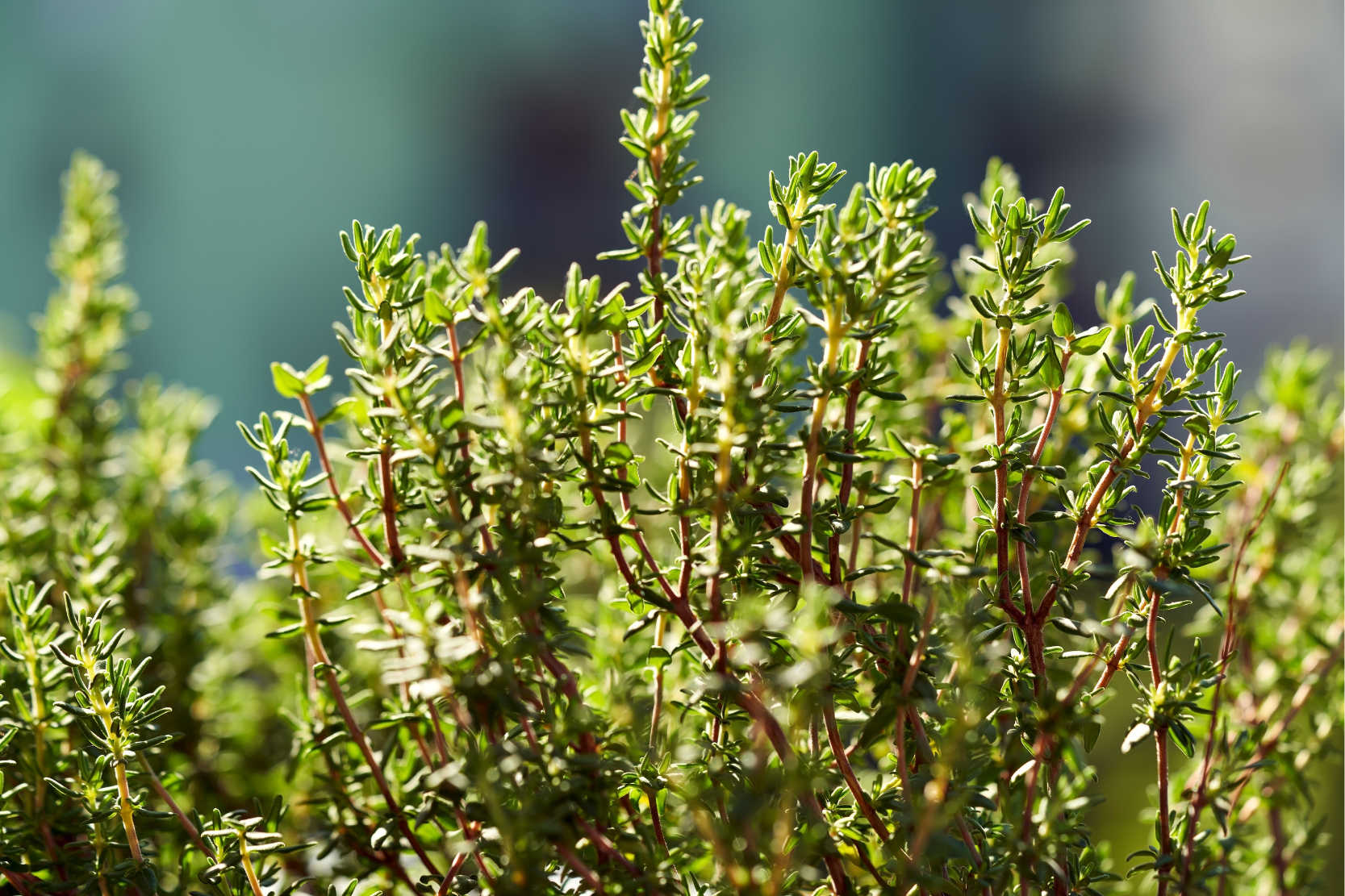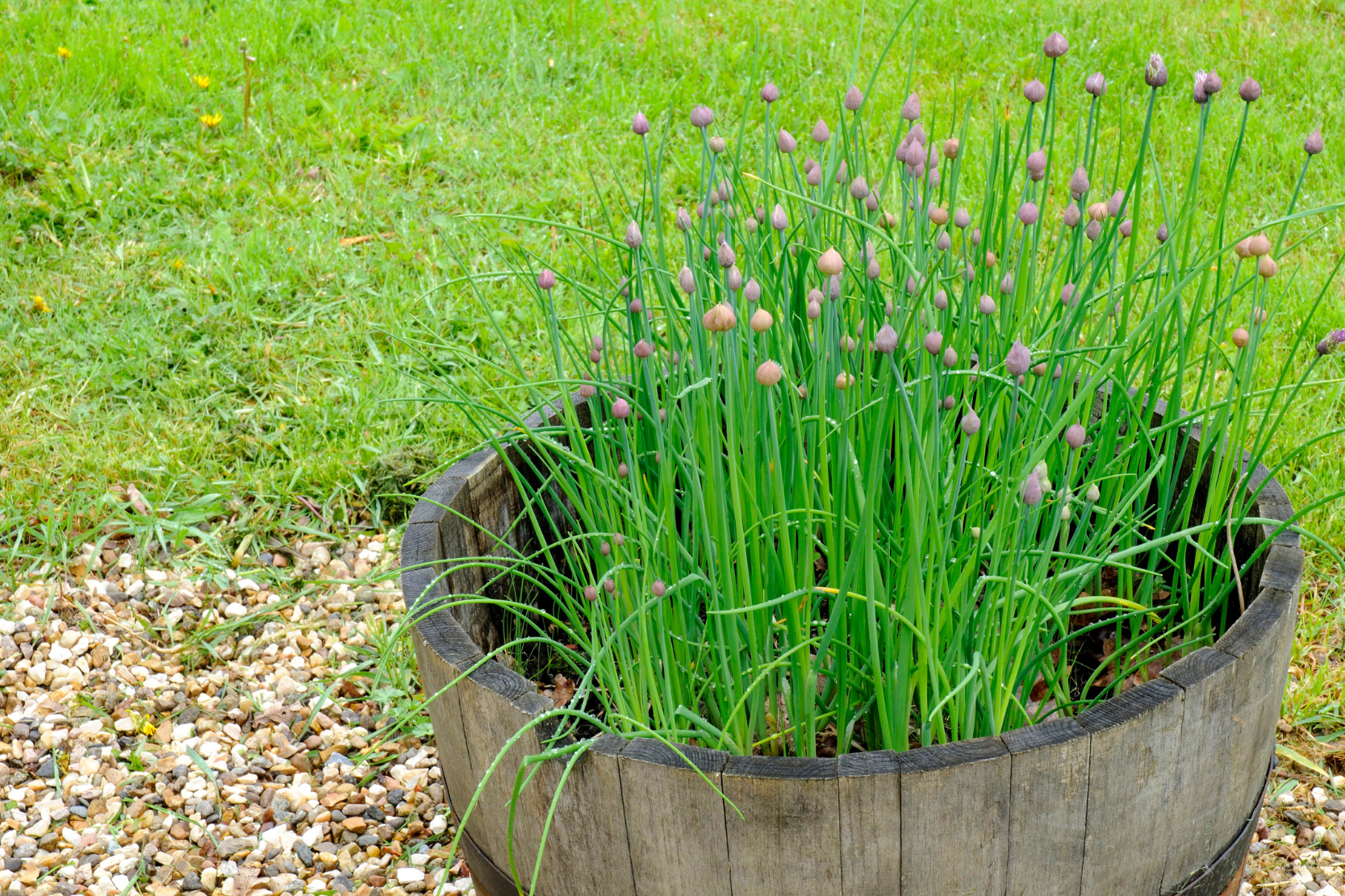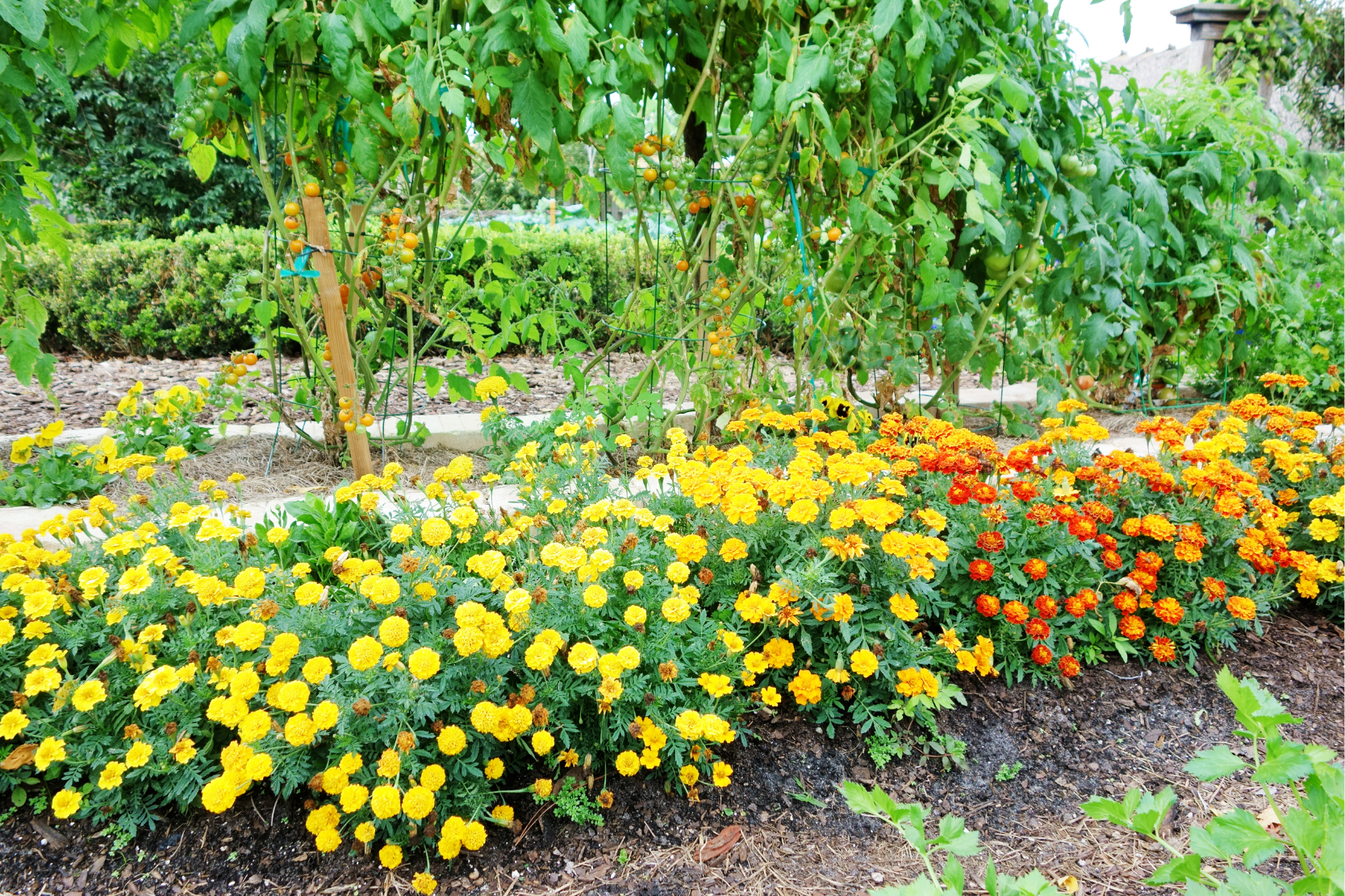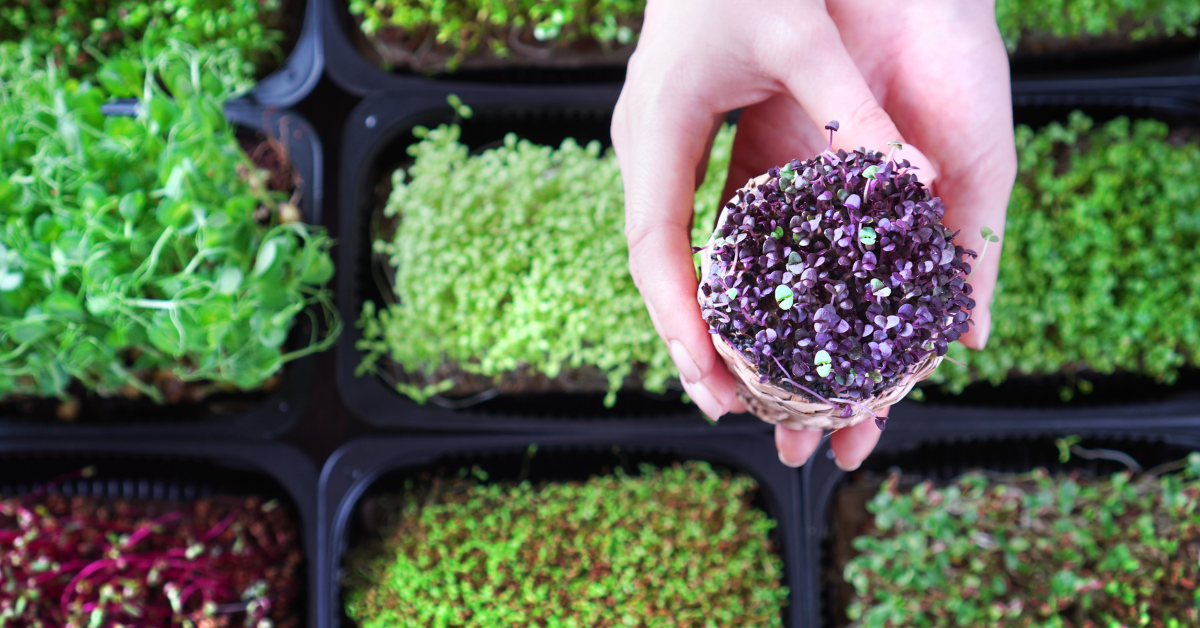Imagine a thriving garden where plants work in harmony, supporting each other’s growth, naturally repelling pests, and enhancing flavors. This is the magic of companion planting with herbs. In this comprehensive guide, we’ll explore how incorporating herbs into your garden can lead to healthier plants, better harvests, and a more balanced ecosystem.
Check this article about companion Planting in the Vegetable Garden” from the University of Massachusetts Amherst Extension program
Table of Contents
Understanding Companion Planting
Companion planting is the strategic practice of growing different plants in close proximity for mutual benefit. When it comes to herbs, these benefits can include:
- Natural pest control
- Improved plant growth and vigor
- Enhanced flavor in edible plants
- Attraction of beneficial insects
- Soil improvement and nutrient accumulation
- Maximized use of garden space

Why Herbs Make Great Companions
Herbs are particularly well-suited for companion planting because:
- Many have strong aromas that confuse or repel garden pests
- Some attract beneficial insects that prey on common garden pests
- Their roots often improve soil structure and aeration
- Many herbs are compact, fitting well between larger plants
- Some accumulate specific nutrients, improving soil fertility
Top 10 Herbs for Companion Planting
1. Basil
- Benefits: Repels flies and mosquitoes, improves growth and flavor of tomatoes
- Best Companions: Tomatoes, peppers, oregano, asparagus
- Avoid Planting Near: Rue, sage

2. Mint
- Benefits: Deters ants, aphids, and cabbage moths
- Best Companions: Cabbage, tomatoes, broccoli
- Planting Tip: Grow in containers to prevent spreading

3. Rosemary
- Benefits: Repels cabbage moths, carrot flies, and bean beetles
- Companions: Cabbage, beans, carrots, sage
- Antagonists: Avoid planting near cucumbers

4. Dill
- Benefits: Attracts beneficial insects, improves growth of cabbage
- Companions: Cabbage, onions, lettuce, cucumbers
- Antagonists: Avoid planting near carrots or tomatoes

5. Cilantro
- Benefits: Repels aphids, attracts beneficial insects
- Companions: Spinach, lettuce, tomatoes
- Planting Tip: Allow some plants to flower to attract beneficials

6. Sage
- Benefits: Deters cabbage moths and carrot flies
- Companions: Cabbage, carrots, strawberries, tomatoes
- Antagonists: Avoid planting near cucumbers

7. Thyme
- Benefits: Deters cabbage worms, improves growth of tomatoes
- Companions: Cabbage, tomatoes, eggplants, strawberries
- Planting Tip: Use as a ground cover around larger plants

8. Chamomile
- Benefits: Improves flavor of onions and cabbages, accumulates calcium and sulfur
- Companions: Onions, cabbage, wheat
- Planting Tip: Allow some plants to self-seed for continuous growth

9. Borage
- Benefits: Deters tomato hornworms, attracts pollinators
- Companions: Tomatoes, strawberries, squash
- Planting Tip: Borage self-seeds readily, so plant where you don’t mind it spreading

10. Chives
- Benefits: Deter aphids and Japanese beetles
- Companions: Carrots, tomatoes, berries
- Antagonists: Avoid planting near beans and peas

Discover The Best Perennial Herbs: Key to Thriving Beautiful Garden
Implementing Companion Planting in Your Garden
Planning Your Layout
- Consider Plant Heights: Place taller herbs behind shorter ones to avoid shading.
- Mind the Spacing: Ensure each plant has enough room to grow without overcrowding.
- Create Diverse Plantings: Mix herbs throughout your garden rather than segregating them.
- Succession Planting: Plan for continuous harvests by planting in stages.
Planting Techniques
- Interplanting: Plant herbs between rows of vegetables.
- Border Planting: Use aromatic herbs as borders around vegetable beds.
- Polyculture: Create diverse plant communities in raised beds or garden plots.
Maximizing Benefits of Herb Companions

For Pest Control
- Plant strongly scented herbs like basil, rosemary, and sage around the perimeter of your garden to create a natural pest barrier.
- Interplant cilantro and dill among vegetables to attract beneficial insects that prey on garden pests.
For Improved Growth
- Plant chamomile near onions and cabbages to improve their flavor and growth.
- Use low-growing thyme as a living mulch around tomatoes and eggplants.
For Pollination
- Allow herbs like borage and cilantro to flower, attracting pollinators that will benefit your entire garden.
Common Companion Planting Combinations

- Tomato Patch: Tomatoes + Basil + Marigolds
- Basil improves tomato flavor and growth
- Marigolds deter nematodes
- Cabbage Patch: Cabbage + Dill + Mint
- Dill attracts beneficial wasps that prey on cabbage pests
- Mint deters cabbage moths
- Carrot Bed: Carrots + Rosemary + Chives
- Rosemary deters carrot flies
- Chives improve carrot growth and flavor
- Strawberry Patch: Strawberries + Thyme + Borage
- Dill attracts beneficial wasps that prey on cabbage pests
- Mint deters cabbage moths
Troubleshooting and Tips
- Observe and Adjust: Monitor your garden closely and be prepared to make changes if certain combinations don’t work well.
- Rotation is Key: Rotate your herb companions along with your vegetables to prevent soil depletion and pest buildup.
- Mind the Spreaders: Be cautious with spreading herbs like mint and oregano. Consider planting them in containers sunk into the ground.
- Harvest Regularly: Regular harvesting of herbs encourages bushier growth and prevents them from overshadowing companions.
- Soil Health: Remember that even with great companions, maintaining healthy soil is crucial for plant success.
FAQs
- Q: Can I plant multiple herbs together? A: Yes, many herbs grow well together. Consider their sunlight and water needs when grouping them.
- Q: How close should I plant herbs to their companions? A: Generally, plant herbs 12-18 inches apart from their companions, but research specific combinations for best results.
- Q: Are there any herbs that shouldn’t be planted together? A: Some herbs, like fennel, can inhibit the growth of other plants. Always research specific combinations before planting.
- Q: How do I know if my companion planting is working? A: Observe your plants for signs of health, reduced pest damage, and improved growth compared to previous seasons.
- Q: Can companion planting completely eliminate the need for pest control? A: While it can significantly reduce pest problems, companion planting is just one part of an integrated pest management strategy.
Companion planting with herbs is both an art and a science. As you experiment with different combinations, you’ll discover what works best in your unique garden ecosystem. Not only will you likely see improvements in plant health and harvests, but you’ll also create a more diverse, resilient, and aromatic garden space.
Remember, every garden is different, and what works in one might not work in another. The key is to observe, learn, and adapt. With time and experience, you’ll develop an intuitive understanding of how to create plant communities that thrive together.
So, go ahead and invite these herbal helpers into your garden. Your plants (and your senses) will thank you!
Want to try something unconventional? Learn how to use beer as a fertilizer for your plants in our guide.






















